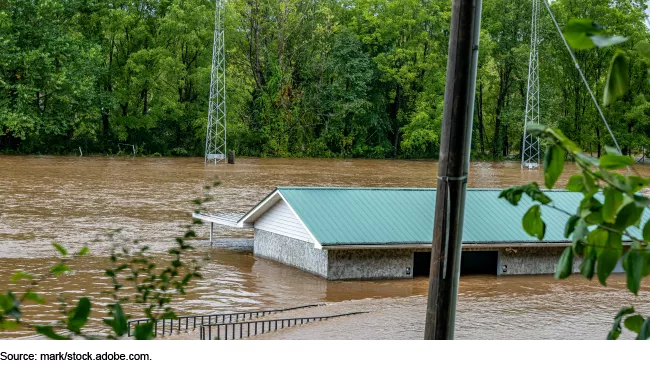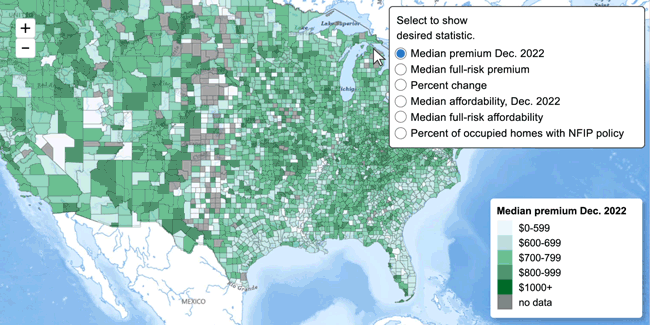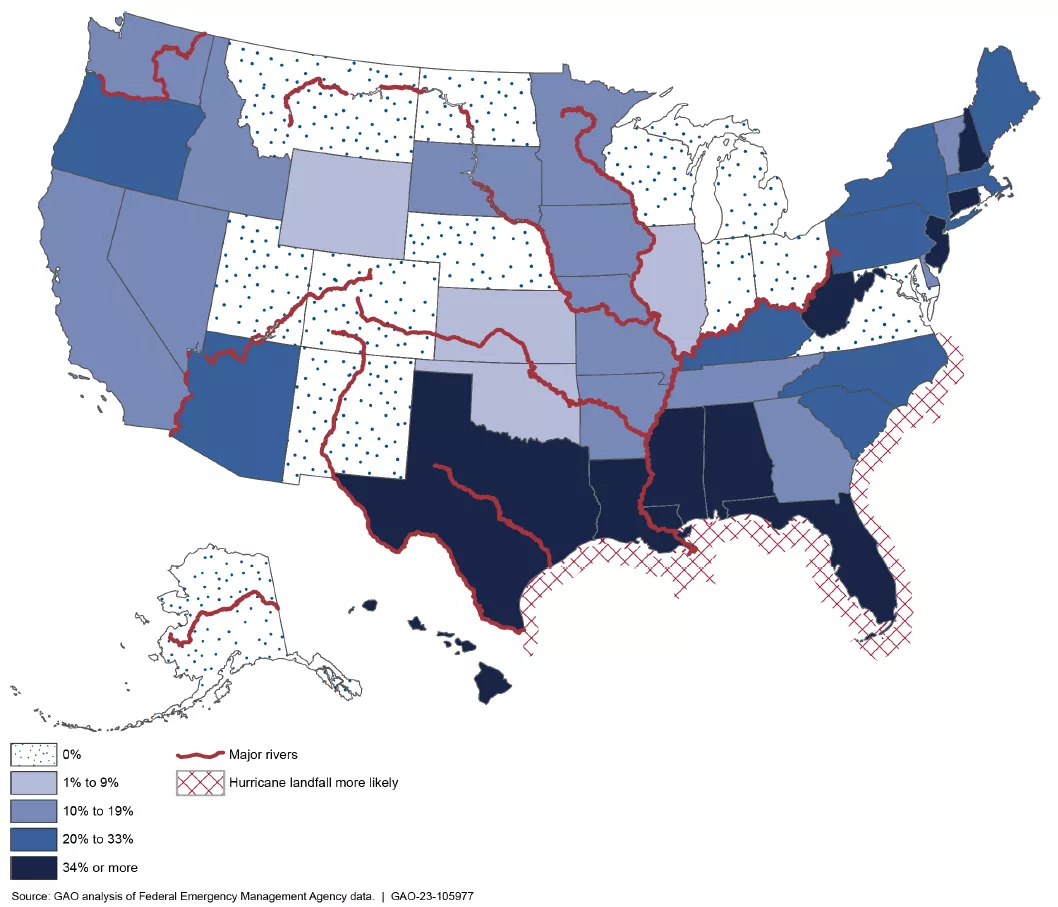Can FEMA and Flood Insurance Keep Up with the Rising Tide of Risks?
A busy and destructive hurricane season will soon come to a close. But months and even years may pass before homeowners across the Southeast are able to fully rebuild and recover from this year’s major flood damage—including that caused by Hurricane Helene.
Many of these homeowners lack the flood insurance coverage that could help them fully rebuild. Nationwide, only about 4% of homeowners have flood insurance.
Today’s WatchBlog post looks at our work on participation in the National Flood Insurance Program, as well as how flood insurance premium rates are set.
Image

Why do so many people who live in areas that flood NOT have flood insurance?
You’ve got homeowners insurance? So, you’re covered, right? Probably not. Most homeowners insurance policies don’t cover flood damage. Homeowners must buy flood insurance separately if they want to be covered for flood damage.
Some homeowners may even be required to purchase flood insurance if they live in areas at high risk of flooding. The Federal Emergency Management Agency (FEMA) maps these locations, determining which homeowners must purchase flood insurance.
But in July 2021, we reported that FEMA’s maps may not reflect current flood risks. As a result, homeowners in areas where flooding can occur may underestimate their flood risk and choose not to purchase flood insurance. While not required, homeowners living outside high-risk areas may choose to buy flood insurance through the National Flood Insurance Program (NFIP) or private insurance. In fact, a significant amount of flood damage occurs in areas where flood insurance coverage is not required. For example, Buncombe County, North Carolina, experienced extensive flooding from this year’s Hurricane Helene. But as recently as December 2022, less than 1% of homes in Buncombe had insurance through NFIP.
We used FEMA data to map and compare the share of homes with an NFIP policy by county. Check out our interactive map by clicking on the image below (or here).
Image

In addition, homeowners may not have flood insurance because they overestimate the amount of federal assistance they could receive after a disaster. In fact, those without NFIP policies received—on average—$3,000 in federal assistance. Those with policies received an average claim payment of $66,000 from 2016 to 2022, according to FEMA. Without flood insurance, homeowners are at greater financial risk from flooding.
But without better information about flood risk, homeowners may continue to go without this important coverage. Because of this risk, we asked Congress to require FEMA to reevaluate its flood risk information to determine which properties should be required to purchase flood insurance.
Affordable for whom? How are rates set under the National Flood Insurance Program?
NFIP has long faced the challenge of providing affordable coverage while also remaining financially solvent. In 2021, FEMA made changes to how it calculates what homeowners would pay for policies that fully reflect flood risk. But changes included rate increases that raise affordability concerns and may discourage homeowners from purchasing this important coverage.
Indeed, we found the current approach is expected to double rates over time for the average policy. Homeowners in five Gulf Coast states—Alabama, Florida, Louisiana, Mississippi, and Texas—are among those expected to see the largest increases because rates in those states had been previously among the most underpriced.
Median NFIP Premium Increase Needed to Fully Reflect Risk, by State, as of 2022
Image

Even with these increases, the current approach seeks to address affordability by prolonging discounted rates through caps on annual rate increases. But this strategy has several limitations. For example, discounted rates are not tied to a homeowner’s ability to pay, meaning that some homeowners who need assistance may not be receiving it (and others who don’t need help may get assistance). Additionally, more homeowners may face affordability challenges over time as their rates rise.
And keeping rates underpriced doesn’t ultimately address FEMA’s other goal—the financial stability of NFIP. While rates will steadily increase each year to reflect the cost of the program, they won’t catch up to the program’s costs until 2037, leaving taxpayers to cover the estimated $27 billion rate shortfall.
More can be done to help make flood insurance through NFIP more affordable to homeowners while also addressing the program’s costs. In 2023, we asked Congress to take steps that would help FEMA address these two goals. Learn more about these steps and NFIP by checking out our report.
- GAO’s fact-based, nonpartisan information helps Congress and federal agencies improve government. The WatchBlog lets us contextualize GAO’s work a little more for the public. Check out more of our posts at GAO.gov/blog.
- Got a question? Email us at blog@gao.gov.
GAO Contacts
Related Products

GAO's mission is to provide Congress with fact-based, nonpartisan information that can help improve federal government performance and ensure accountability for the benefit of the American people. GAO launched its WatchBlog in January, 2014, as part of its continuing effort to reach its audiences—Congress and the American people—where they are currently looking for information.
The blog format allows GAO to provide a little more context about its work than it can offer on its other social media platforms. Posts will tie GAO work to current events and the news; show how GAO’s work is affecting agencies or legislation; highlight reports, testimonies, and issue areas where GAO does work; and provide information about GAO itself, among other things.
Please send any feedback on GAO's WatchBlog to blog@gao.gov.




